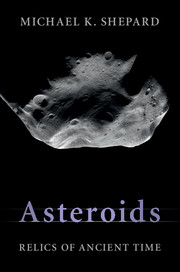Book contents
- Frontmatter
- Dedication
- Contents
- Preface
- Acknowledgements
- Brief list of asteroid and meteorite terms
- 1 It's a small world
- 2 A night at the zoo
- 3 It came from outer space
- 4 A day at the museum
- 5 The gambler's fallacy
- 6 Remembrance of things past
- 7 The ties that bind
- 8 Terra incognita
- 9 To your scattered bodies go
- 10 Scouts, sappers, and miners
- Glossary
- Bibliography
- Index
- References
9 - To your scattered bodies go
Published online by Cambridge University Press: 05 May 2015
- Frontmatter
- Dedication
- Contents
- Preface
- Acknowledgements
- Brief list of asteroid and meteorite terms
- 1 It's a small world
- 2 A night at the zoo
- 3 It came from outer space
- 4 A day at the museum
- 5 The gambler's fallacy
- 6 Remembrance of things past
- 7 The ties that bind
- 8 Terra incognita
- 9 To your scattered bodies go
- 10 Scouts, sappers, and miners
- Glossary
- Bibliography
- Index
- References
Summary
The fair breeze blew, the white foam flew,
The furrow followed free:
We were the first that ever burst
Into that silent sea.
Samuel Taylor Coleridge, Rime of the Ancient Mariner
A NEAR ABORT
December 20, 1998. Sunday evening, 5 p.m.
The fear must have been palpable. Contact with the Near Earth Asteroid Rendezvous (NEAR) spacecraft had been lost for 36 minutes, and there was no indication it was coming back. Three years into the mission, the orbiter was 20 days from its target, the NEA 433 Eros. An hour earlier, an onboard command had fired the main engine to begin the final rendezvous sequence, the first of three engine burns that would place it in a high orbit a thousand kilometers above the asteroid surface. The spacecraft and asteroid were so far away that the burn signal took 20 minutes to reach ground control at the Johns Hopkins Applied Physics Laboratory in Laurel, Maryland. They had received confirmation that the burn had started, almost immediately aborted, then … nothing. What had gone wrong?
Exploration is risky. Some of the smartest people on the planet design and build spacecraft, but the task is so complex that it is practically impossible to keep mistakes from creeping in, or to plan for every contingency. The best that can be done is to test, test, test, and build in enough safeguards so that when something does go wrong, it gives engineers on the ground time to recover and fix the problem. But even with these precautions, it doesn't always work. Just six years earlier, the Mars Observer spacecraft had been lost only three days before orbital insertion. Without wreckage or other hard data, it was difficult to conduct a postmortem and learn from its failure. The most likely scenario, reported after months of work, was a rupture of the fuel pressurization tank.
- Type
- Chapter
- Information
- AsteroidsRelics of Ancient Time, pp. 253 - 282Publisher: Cambridge University PressPrint publication year: 2015



